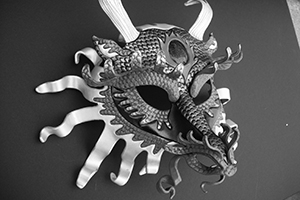 Walking with Andrea Masse Tognetti through the grounds of Narita-san is an enriching cultural experience. The temple becomes more than just a brief stop before checking into the international airport. Tognetti possesses the awe of a typical tourist, snapping away photos of gardens, statues — everything colorful and brightly painted is religiously recorded. But then inside the main temple, she sheds her tourist mask and puts on her artist mask. Whipping out her notebook, she quickly draws an incredibly detailed sketch of one statue’s face. From her journal, she writes: The main part of the shrine is populated by a gigantic tableau of colossal brightly painted guardian deities. I counted five massive, 20-foot tall many-headed gods, frightening and yet benevolent at the same time.
Walking with Andrea Masse Tognetti through the grounds of Narita-san is an enriching cultural experience. The temple becomes more than just a brief stop before checking into the international airport. Tognetti possesses the awe of a typical tourist, snapping away photos of gardens, statues — everything colorful and brightly painted is religiously recorded. But then inside the main temple, she sheds her tourist mask and puts on her artist mask. Whipping out her notebook, she quickly draws an incredibly detailed sketch of one statue’s face. From her journal, she writes: The main part of the shrine is populated by a gigantic tableau of colossal brightly painted guardian deities. I counted five massive, 20-foot tall many-headed gods, frightening and yet benevolent at the same time.
Walking around the grounds with her, she wears yet another mask, this time of a spiritual Shintoist. Unlike tourists interested only in the famous sites, Tognetti takes a stroll off the main strip and finds a perfectly straight ribbon of a waterfall through a forest of cedar. She closes her eyes for a moment to pay homage to the calm that is nature.
Her anthropologist mask also pops up when she makes observations about parent-child relationships by watching Japanese families interact. And she isn’t afraid to delve into the irrelevant, expressing delight when she had to take off her shoes for the first time and pontificating on the high and low tech realms of Japanese toilets. Inspired by the girls of Shibuya on her first visit to Japan, she went back to the United States and outfitted her youthful 40-something self in suede boots and a flowery skirt. In a span of a few hours, Andrea Masse Tognetti wears many masks to show her multi-faceted self. Her mind is a busy place, always curious, inspired, and creating.
Upon return to her home in upstate New York from Japan last October, Tognetti decided to record her inspirations by opening up a gallery on DeviantArt, the largest on-line art community, specifically focused on her Japan-related works. “I was amazed myself at the sheer amount of Japanese-influenced artwork I’ve done in the last few years. I think in many ways my natural style is already very Asian,” she says upon finishing the site. Already the site is provoking much interest. “It’s been fun for me to educate the younger artists at the site about Japanese art and folklore. Through my masks, it’s nice to see them appreciating and learning about other cultures.”
Tognetti herself was immersed in traditions of Japanese art early on. Her father, Jean-Charles Masse, an award-winning graphics designer (who designed the Moosehead Beer label), had exposed his children to the world of ukiyoe and kyogen from an early age. Newer influences for Tognetti include the works of Hayao Miyazaki and the video game, Okami. Her brother John Masse is also now an award-winning multi-media artist.
It may have always her calling to be an artist, but Tognetti stumbled into mask-making serendipitiously. Having always enjoyed experimenting with various mediums, one night she discovered that wet leather can be sculpted and when dried with heat, can retain that shape. “I’ve always loved sculpting and leather is a very clean medium that not a lot of people use,” she explains. “I love it because it’s so unique.”
Having a background in anthropology, Tognetti noted that almost every culture has masks for art and spiritualism. “Masks have power. How they mold to the human face makes them the most culturally interactive form of art that I can think of because your own eyes become the soul of the piece. I try to collaborate with every person who has ever worn one of my creations, because masks are incomplete until someone wears them.”
But there was a time though when Tognetti was not creating art. Though already blessed with a teenage daughter, she had very much wanted to have another child upon her remarriage. Yet for the past six years, she had a miscarriage almost every year. “Every time I got pregnant, I was afraid to be happy because I would just think ‘oh another miscarriage.’ And sure enough, four months later, the bleeding would start,” she recalls almost matter of factly. In the fall of 2007, she got pregnant again, and again, the baby miscarried. But this time, the bleeding did not stop for weeks. She was rushed to the hospital for reconstructive surgery.
In February 2008, because another pregnancy would be life-threatening, Tognetti had to have surgery—for the third time in six months—to prevent her from ever having children. “By this time, I was emotionally numb. My mind became blank. All I could think of was ‘Just please, no more hospitals.’” Tognetti considers herself a tough and optimistic person by nature, but at the time, she found herself frozen in her pain, both physical and emotional.
Then in an attempt to cheer her up, a friend living in Tokyo sent her a video clip of a man doing a crazy obstacle course. That show is called “Sasuke” and features mostly amateur participants attempting to conquer sets of challenging obstacles. In 11 years of broadcasting and in over 2,100 attempts, only two have ever finished. Tognetti watched one completion by a fisherman from Kyushu named Makoto Nagano. “Seeing him really snapped me out of it. It was the way he approaches that obstacle course; with intense focus, determination but most importantly, with joy. From him, I learned about persevering with a smile on your face.”
To approach a stranger living in another country to thank him was not in character with Tognetti who describes herself as “shy until you get to know me.” But she was determined to let her hero know how much he had inspired her. The blue dragon on a keyholder was tiny but shaped with the most intricate details. To her surprise, he expressed his delight to her gift by an e-mail response. (To this day, he publicly cites the dragon as his favorite gift ever from a fan.) Overwhelmed at being thanked by someone who receives hundreds of fan letters, she took a bolder step.
To express her gratitude to the producer of the show, she made a double crane mask for him – cranes symbolizing the power of healing and sent it along with a letter telling about how his show inspired her to heal and create again. Her brother was doing some designs for the producer so Tognetti did have a personal contact, but still she was taken back by his acknowledgement of her gift. Ushio Higuchi, the show’s producer, arranged for her brother to whisk her off on a secret trip that turned out to be a business class flight to Japan. They were then VIP guests on the set of the Sasuke show. Tognetti got to shake hands with her hero fisherman and said she almost fainted. The plot then thickens when upon her return to New York, she is asked to create all the masks for another Higuchi production called Muscle Musical. The theme of his fall 2008 show would be called Magicarade – highlighting a magician and the cast in full masquerade gear – using all of Tognetti’s masks. In a span of a few weeks, she had produced some of her best work, carving and shaping fantastical oni demons and dragons in vibrant red, gold, white and black.
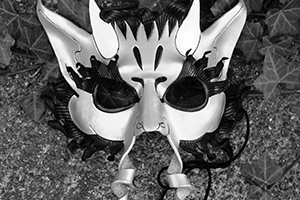 “Yes, really. I know. If this were fiction it’d be bad fiction. But it all really happened just like that,” she laughingly recalls. Part of her incredible experience was working with designer Junko Koshino who was responsible for the costumes of the show. Through an interpreter, the veteran renowned fashion designer commented on Tognetti’s masks: “I was challenged by Andrea’s designs and wanted to create costumes that would emphasize the masks and not draw attention away from them. Their beauty was inspiring.”
“Yes, really. I know. If this were fiction it’d be bad fiction. But it all really happened just like that,” she laughingly recalls. Part of her incredible experience was working with designer Junko Koshino who was responsible for the costumes of the show. Through an interpreter, the veteran renowned fashion designer commented on Tognetti’s masks: “I was challenged by Andrea’s designs and wanted to create costumes that would emphasize the masks and not draw attention away from them. Their beauty was inspiring.”
For Tognetti, lost in pain and grief a year ago, to get such an accolade from a top fashion designer would not have been imaginable. She has advice for people going through bad times. “Don’t wait for things to get better. Act. Action is always the best response when in crisis and don’t do just one thing at a time. Set several things in motion and don’t wait to see how it turns out. Let the knowledge that you are taking action be enough,” she says reflecting on her life. “I also found that even when you are feeling shortchanged by life, still give what you can, but of course on your own terms. The universe responds kindly to people who contribute in positive ways.”
When Tognetti first saw jizo statues, she asked what they were for. When told that they can represent the souls of unborn children, she wept. “These are my babies,” she said. But Tognetti’s life is in forward mode and she now buys daruma dolls and made wishes on them. She now has several of them painted in both eyes. “And the darumas, they keep getting bigger,” she says with a smile.
*View the Japan-inspired artwork of Andrea Masse Tognetti at: http://merimask.deviantart.com/gallery/
Story by Carol Hui
From J SELECT Magazine, Feburary 2009

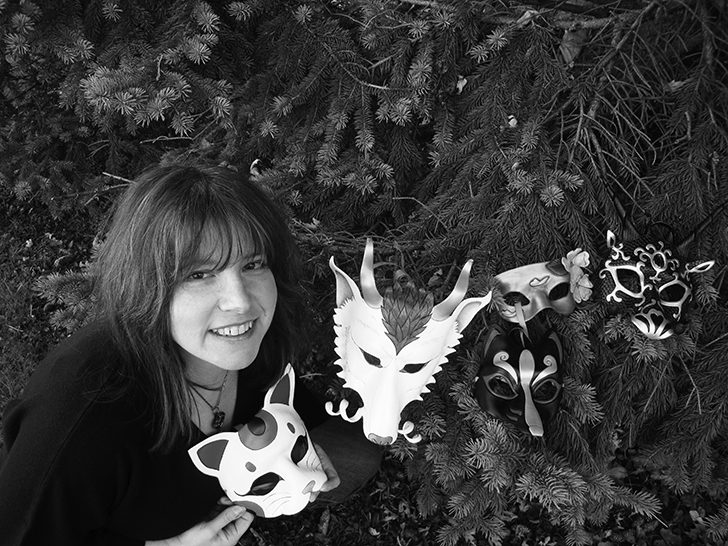

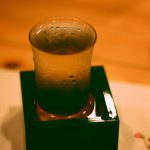
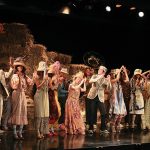




-360x230.jpg)





Recent Comments